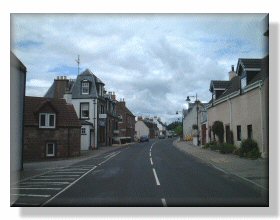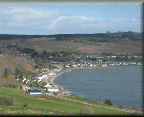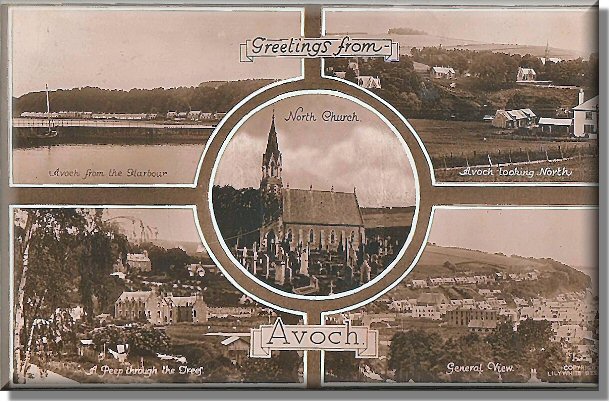
Lazy corner
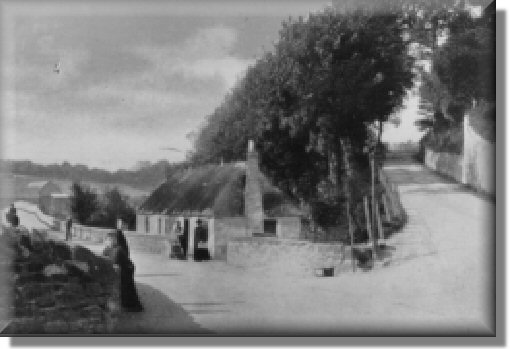
This refers to what is now the road junction immediately outside the Station Hotel. At this corner the men of the village used to meet – and the term “lazy” referred to the fact that the unemployed congregated around that area to catch up on the news of the day. Nowadays the youth of the village continue the tradition. The picture shows the corner as it once was – today the cottage in the centre of the picture has gone, and the newer houses of what is now Toll Road have been built
Congregational Church
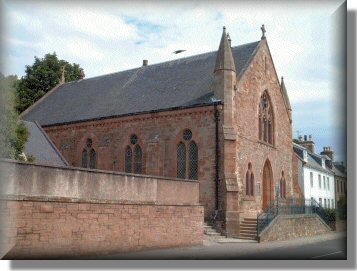
Just off to the right of Lazy Corner (as viewed in the picture) is the Congregational Church. Services were orginally held in the “Parkie” by the Haldane Brothers. If it rained, the followers moved to under the bridge beside the Station Hotel. The congregation was gifted a cottage by Sir Alexander Mackenzie, on the existing site where the church was eventually built.
Avoch Parish Church
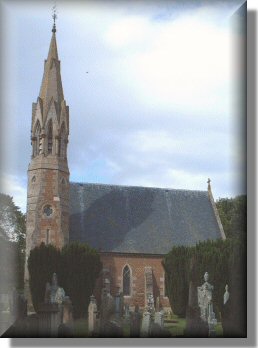
The Parish Church dates from 1670, when the first church was built on the present site. The present building is the third on the site – the first two having been destroyed by fire. The building dates from 1870, and is built east-west, whereas the previous two were built north-south/
In the Church yard, Sir Alexander Mackenzie and his family are buried, as is the Fletcher Rosehaugh family vault.
Avoch Free Church
The third large church in Avoch, and the first to be seen when entering the village from Munlochy, is the Free Church. This is no longer in use as a church but is a private residence, having been converted by local craftsman Robert Douglas in 1986-1988, with plans developed by local architect Douglas Murray. The house was purchased by a third Douglas – Douglas Maclean, who now resides in the west wing of the building.
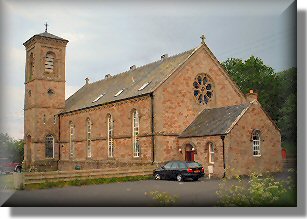
From the 1930s the building was used as the village hall, and has seen many a dance and other local village activities. The balcony is still in place, now housing an upstairs lounge. The rose window at the west end was created by a local firm specialising in hand-made stained glass – Northern Lights. When the building was purchased by the Macleans in 1988, the window was bricked up, and internally the ceiling had been dropped to a lower level, and cut straight across the window opening. The Macleans had the ceiling raised by inserting a barrel vault, and had a new window designed and installed. Local architect Douglas Murray was also responsible for the plans for this later conversion.
There is a close link with James Douglas Fletcher, and with Alexander Ross, the architect who designed the Cathedral in Inverness. Following the Disruption of the Church in 1843, the Free Church approached Sir James John Randall MacKenzie of Rosehaugh requesting a church site – but this was refused. A new site was later agreed with James Fletcher, for a rent of 1/-, and Fletcher provided £500 towards the building costs. There was one proviso – that they engage the architect Alexander Ross of Inverness. The church opened, in 1873, free of debt.
Harbour
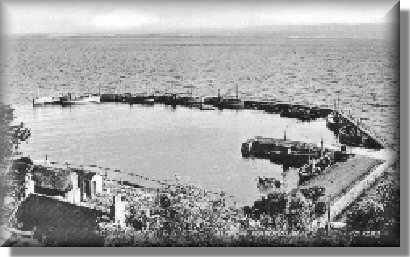
The harbour was built originally in 1814 by Sir Alexander Mackenzie, and was designed by Thomas Telford – famed for his works of engineering throughout Scotland. Avoch Harbour Trust was formed in 1903 and a new harbour was built with money raised locally, aided by grants and a loan from the Fishery Board. The harbour was completed in 1906; the east breakwater was added in 1912, and the pier was renovated to its present standard in 1948.
Streets
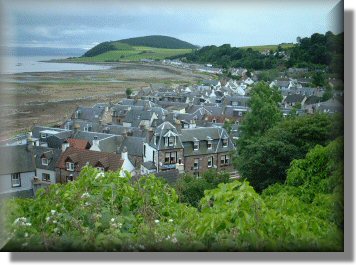
Off the High Street on the south side is the former Seatown area of the village. These consist mainly of fishermen’s cottages facing gable end ot the sea to provide shelter for the boats which were drawn up in between the houses during storms.
The streets are believed to have been named after former landlords and their families. The picture shows the seatown area, taken from Braehead, overlooking the harbour and firth.
Piggery
No longer there, but the piggery used to be located beside Henrietta Bridge. The piggery was built by J D Fletcher of Rosehaugh around 1850. Before this, villagers kept their pigs in their back yards. Mr Fletcher insisted for hygiene reasons that pigs should be kept in the piggery, which was made available rent free
Community Hall
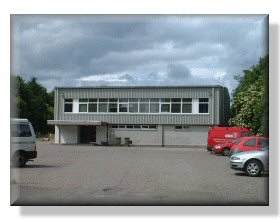
For many years, the Free Church was the village hall. In the 1969s it was replaced by a new purpose-built centre, situated behind the infant school. The community centre continues to be a social centre point for the village.
High Street
This is a modern photo of the High Street – look elsewhere in the site to see what it looked like in times gone by.
